Whether you’re just getting started with guitar effects pedals or already have a collection (whether you’re building them or buying them), you’ve probably heard of overdrive, distortion, and fuzz. Maye you’ve heard these terms used interchangeably or heard they’re similar, but you don’t really know the difference. Gear heads could probably go on and on about the big differences between the three, but they still may not get into the technicalities of it all. Maybe you’ve actually listened to songs that have a distinct overdrive sound and songs that have a distinct distortion sound, or an obvious fuzz sound; you know it when you hear it, but you still don’t know the difference.
Well, let’s go through the difference between overdrive, distortion, and fuzz in a little more depth. Let’s talk about what each effect sounds like, why it sounds like that, and how use each one. These effects are the basics of what a guitar pedal does. Of course there are many more effects out there, but understanding these basics is important.
What Is An Overdrive Pedal And How Does It Work?
To start thinking about overdrive and what it is, you need to go back to tube amps, what they are, and how they worked. These days you’ll mostly find solid state amps, but back in the day vacuum tubes were used. Push those tubes too far and the sound starts to do fun things. I would say the sound starts to “distort,” but I’m trying to cut a clear line between distortion and overdrive. Sonically speaking, the sound does distort, but it’s not “distortion” in the way we talk about it when we’re talking effects pedals. This “distortion” is overdrive.
Early tube amps were designed to keep a clean sound and not distort as much as possible; yes, they did distort when pushed too far, but manufacturers tried to avoid this. Until musicians figured out that an overdriven amp sounds awesome and started pushing amps to the limit. Then amps started getting built with overdrive in mind; they’ll play clean and they’ll play overdriven.
Put simply, overdrive is a tube amp getting pushed to its limits. If you’re using a solid state amp, an overdrive pedal simulates that sound. With that, overdrive reacts to how you’re playing. Play harder and you’ll get more overdriven tones from your guitar, play software and it backs off a little bit.
The advantage of having an overdrive pedal (or function on the amp) rather than actually pushing the amp to the limit is that you don’t need to blow your neighbourhood or audience out of the water to get the desired tone. To get overdrive, the amp has to be working hard, which means having it turned up loud. An overdrive pedal allows you to get that sound without the extreme volume.
When using an overdrive pedal, you will hear an increase in volume. And the harder to play, the more the distortion from the overdrive will come through. That’s a main feature of overdrive.
What Are Some Songs With Overdrive?
Overdrive features a lot in blues music. In blues, they’re not doing it for distortion, they’re looking to push the amp to the limits and get the noise and squeals that overdrive offers.
Listen to La Grange by ZZ Top. This is Billy Gibbons at his best. Not only is the extended solo very overdriven, he’s using it to his advantage with plenty of pinch harmonics and bends to make that guitar scream.
Notice that the guitar tone doesn’t have a crunch to it that you would expect in distortion. It’s relatively clear but sounds and feels like amp is struggling a little bit. That’s overdrive. Even if you listen the song on a lower volume it still feels loud.
What Is A Distortion Pedal And How Does It Work?
A distortion pedal adds distortion to the sound that’s going through it. There, question answered. But what is distortion? There’s a reason why I went through overdrive first.
Distortion has a bit of a crunch to it. Put a little bit technically, a distortion pedal clips the sound wave, removing the peaks of the wave so it’s not as smooth. Unlike overdrive, where the sound gets more overdriven the harder you play, distortion is generally consistent regardless of how you’re playing.
Boss, who are well known for their quality effects pedals, put it well in their article on distortion versus overdrive. Here they refer to overdrive as “natural” while distortion is a more unnatural sound, and this is true. As mentioned, overdrive is the natural consequence of pushing an amp too far while distortion is an unnatural clipping of the sound wave to produce a crunchier sound.
What Are Some Songs With Distortion
You’ll hear distortion in a lot of heavier rock, punk, and general rock and roll.
What’s funny, when looking for an example of a song that has an obvious use of distortion, I’m seeing quite a few examples of songs that actually use fuzz or just an amp pushed to its limits. These are famous songs from the 1960’s when distortion pedals didn’t even exist!
If you want to clearly hear some distortion, check out Blitzkrieg Bop by the Ramones. While there are probably better examples out there, since this is early stripped down Punk, there’s nothing much else getting in the way of hearing the sound.
The sound is far from clean and is great.
What Is A Fuzz Pedal And How Does It Work?
And then there was fuzz.
Overall, fuzz is a much older effect than overdrive or distortion; many of the original effects pedals were fuzz pedals. Take, for example, the Fuzz Face or the Vox Tone Bender, first made in the 1960’s. Meanwhile, overdrive pedals didn’t come around until the 1970’s with the Boss OD-1 and then the Ibanez Tube Screamer.
Fuzz is similar to distortion, but the clipping is harder. With distortion, there’s still some curvature in the sound wave, but fuzz tends to square the wave off a little bit more. However, fuzz is a bit of a thing of its own. It adds a disturbance to the sound signal so that some interesting overtones can come through. Because of this, different fuzz pedals can sound very different. Fuzz can almost sound like something is damaged, making completely new and different sounds.
All in all, fuzz can actually be a lot harder to describe than overdrive and distortion. I think this is because overdrive and distortion is typically created by pushing a signal up and then having that signal clipped with diodes (this is explained more in the next section). Meanwhile fuzz is usually quite a simple circuit, with the effect being created by not treating a transistor right. Different transistors will have different reactions to being abused. Since it’s usually a simpler circuit, fuzz pedals are a great beginner friendly DIY pedal build. If you’re thinking about getting into guitar pedal building, fuzz is where to start.
What Are Some Songs With Fuzz
I mentioned earlier that songs with fuzz are often labeled as songs with distortion. Yes, fuzz is a a distorted sound, but I’m trying to be precise in terminology here so that you can hear the difference.
Purple Haze by the Jimi Hendrix Experience is a good example of fuzz, especially because Hendrix was an early user of these kinds of pedals. Purple Haze uses an Octavio fuzz pedal in it, which actually adds an octave to the sound, but this was all accomplished with transistors and diodes! It goes to show what can be done with some fuzz.
So What’s The Big Difference Between How Overdrive Distortion, And Fuzz Work?
Overdrive and distortion use the same basic circuitry, but distortion just does it more.
To create an overdrive or distortion pedal, the signal from the guitar is increased through an operational amplifier (often called an op-amp). An op amp is able to take a weak electrical signal and increase it (with additional electricity). If you’re just passing a guitar signal through an op-amp and some resistors, all you get is a volume boost. If you then clip that signal with a couple diodes, you get an overdriven or distorted sound.
In most circuits for an overdrive pedal, clipping happens in the feedback loop for the op-amp. The circuit diagram looks like this:

Distortion, on the other hand, has the clipping after the signal is amplified through the op-amp, with the clipping diodes going to ground, like this:
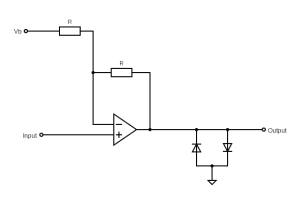
If you’re here just because you want to know the difference between overdrive and distortion, that’s probably getting too technical. If you’re here because you’re interested in building your own guitar pedals, hopefully I’ve answered some questions.
If you don’t understand what clipping is, here’s an explanation.
A sound wave is just that, a wave. Clip the tops off that wave a little bit and you have soft clipping (overdrive). Clip the wave a lot and you have hard clipping (distortion).
If you want a visual representation, here’s a diagram of a normal sound wave in black with soft clipping in yellow and hard clipping in red. Notice that the hard clipping squares off the wave a little bit more. There’s still some curvature, but a lot less That’s distortion!

Fuzz, on the other hand, is more unpredictable than this. As mentioned, fuzz usually relies on transistors to do the clipping for it. Transistors can only take so much gain before they’re pushed over the edge, but different transistors will behave differently.
The sound wave for a fuzz pedal is usually more squared off than distortion, but there can be more complex tones throughout it depending on the transistors used. And that’s half the fun of fuzz!
And That’s That
Hopefully you now understand the not so subtle difference between overdrive, distortion and fuzz. If my explanation wasn’t very good, hopefully the example songs answered the question for you.
If you’re exploring the type of music you like to play, the sound, and the tone you want, it’s always good to experiment. Perhaps look into the gear your favourite guitarists use and start narrowing down on their sound, then expand from there. If you’re looking to start making your own guitar pedals, I suggest starting with fuzz. Overdrive and distortion circuits can also often be pretty simple, but they can also get pretty beefy; work your way up to them.
Related posts:
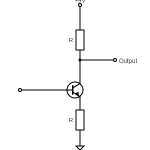 What Is Gain (And How It’s Different From Volume)
What Is Gain (And How It’s Different From Volume)
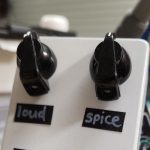 How Does A Drive, Gain, Or Distortion Knob Work?
How Does A Drive, Gain, Or Distortion Knob Work?
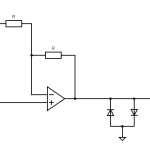 How To Use A Distortion Or Overdrive Pedal
How To Use A Distortion Or Overdrive Pedal
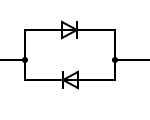 What’s The Difference Between Symmetrical And Asymmetrical Clipping?
What’s The Difference Between Symmetrical And Asymmetrical Clipping?
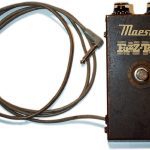 A Brief History Of Fuzz Pedals
A Brief History Of Fuzz Pedals
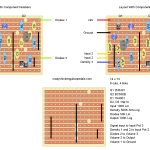 Catalinbread Karma Suture On Stripboard
Catalinbread Karma Suture On Stripboard
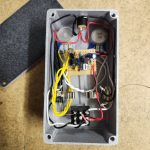 How To Wire Guitar Pedal Enclosures
How To Wire Guitar Pedal Enclosures
 Greer Amps Green Giant On Stripboard
Greer Amps Green Giant On Stripboard
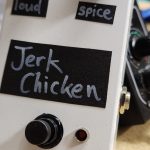 What Do Guitar Pedals Do?
What Do Guitar Pedals Do?
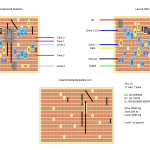 Ibanez Tube Screamer (TS808) On Stripboard
Ibanez Tube Screamer (TS808) On Stripboard

